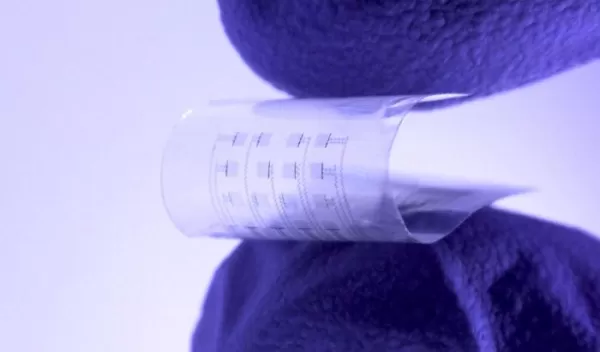
Dissolving cardiac device monitors, treats heart disease
Nearly 700,000 people in the United States die from heart disease every year, and one-third of those deaths result from complications in the first weeks or months following a traumatic heart-related event.
To help prevent those deaths, U.S. National Science Foundation-supported researchers at Northwestern and George Washington universities have developed a new device to monitor and treat heart disease and dysfunction in the days, weeks or months following such events. And, after the device is no longer needed, it harmlessly dissolves inside the body, bypassing the need for extraction.
About the size of a postage stamp, the soft, flexible device uses an array of sensors and actuators to perform more complicated investigations than traditional devices, such as pacemakers, can accomplish. Not only can it be placed on various sections of the heart, the device also continuously streams information to physicians, so they can remotely monitor a patient's heart in real time. The device also is highly transparent, allowing physicians to observe specific heart regions to make a diagnosis or provide a treatment.
The research was published in the journal Science Advances.
"Several serious complications, including atrial fibrillation and heart block, can follow cardiac surgeries or catheter-based therapies," said Northwestern's Igor Efimov, an experimental cardiologist who co-led the study. "Current post-surgical monitoring and treatment of these complications require more sophisticated technology than currently available. We hope our new device can close this gap in technology. Our transient electronic device can map electrical activity from numerous locations on the atria and then deliver electrical stimuli from many locations to stop atrial fibrillation as soon as it starts."
Added GW's Luyao Lu, a biomedical engineer who co-led the work with Efimov, "Many deaths that occur following heart surgery or a heart attack could be prevented if doctors had better tools to monitor and treat patients in the delicate weeks and months after these events take place. The tool developed in our work has great potential to address unmet needs in many programs of fundamental and translational cardiac research."
